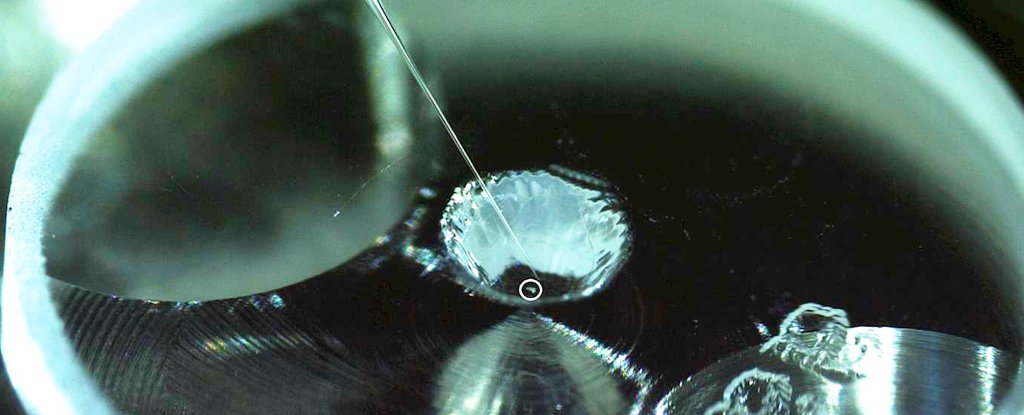
Follow the twisted branches of your family tree all the way back to its original origins billions of years in the past, and you will see that we all sprang from dust rich in organic chemistry.
Where this organic matter came from has been a topic of debate for over half a century. Now researchers have found the first evidence of organic materials essential for life on Earth on the surface of an S-type asteroid.
An international team of researchers recently conducted an in-depth analysis of one of the particles brought back from the asteroid Itokawa by the original Hayabusa mission of the Japanese space agency (JAXA) in 2010.
Most of the meteorites on Earth come from S-type asteroids such as Itokawa, so knowing that it could contain essential ingredients for life on our planet is an important step forward in our understanding of how life-forming conditions can arise. So far, most organic matter research has focused on carbon-rich (c-class) asteroids.
When the team looked inside the sample, it found that organic matter coming from the asteroid itself evolved over time through extreme conditions – with water and organic matter from other sources.
This is similar to the process that took place on Earth and helps us better understand how the earliest forms of terrestrial biochemistry could simply be an extension of the chemistry that takes place in many asteroids.
“These findings are really exciting because they reveal complex details of an asteroid’s history and how its evolutionary path is so similar to that of the prebiotic Earth,” said Earth scientist Queenie Chan of Royal Holloway University of London.
Evolutionary models can take us some 3.5 billion years back to a time when life was little more than competing nucleic acid sequences.
Step back further and we are forced to consider how elements such as hydrogen, oxygen, nitrogen and carbon can come together to form amazingly complex molecules that can arrange themselves into things that behave like RNA, proteins and fatty acids.
In the 1950s, when researchers first pondered the tantalizing question of how simpler ingredients could spontaneously prepare an organic soup, experiments showed that the conditions on the Earth’s surface could do enough work.
Nearly seven decades later, our focus has shifted to the slow and steady chemical processes in the rocks that converge in worlds like ours.
Evidence isn’t hard to come by. It is now clear that a steady rain of rock and ice billions of years ago could have released molecules of cyanide, the sugar ribose and even amino acids – along with a generous donation of water – onto the Earth’s surface.
But the extent to which meteorite chemistry may have been contaminated by things on Earth leaves some doubt.
Since Hayabusa’s return a decade ago, more than 900 particles of pristine asteroid debris have been separated from the cargo and stored in a JAXA cleanroom.
Fewer than 10 have been examined for signs of organic chemistry, but all were found to contain molecules consisting mainly of carbon.
Itokawa is what is referred to as a stony (or pebbly) class of asteroids, or s class. After early studies of the material, it is also believed to be a common chondrite – a relatively unaltered type of space rock that represents a more primitive state of the inner solar system.
Since these types of asteroids make up a large portion of the minerals that enter our planet, and are generally not thought to contain much organic chemistry, those early findings were intriguing to say the least.
Chan and her colleagues took just one of these dust particles, a 30 micrometre wide particle shaped like the continent of South America, and conducted a detailed analysis of its composition, including a study of the water content.
They found a rich variety of carbonaceous compounds, including signs of disordered polyaromatic molecules of distinctly alien origin, and graphite structures.
“ After being studied extensively by an international team of researchers, our analysis of a single grain, nicknamed ‘Amazon’, has preserved both primitive (unheated) and processed (heated) organic matter within ten microns (one-thousandth of an inch) away, ”says Chan.
“The organic matter heated indicates that the asteroid had previously heated to over 600 ° C. After the asteroid cooled.”
Itokawa has an exciting history for a rock that has nothing better to do than float idly around the sun for a few billion years, after baking well, dehydrated, and then rehydrated with a new layer of fresh material.
While its story is not as exciting as the history of our own planet, the asteroid’s activity describes the boiling of organic matter in space as a complex process and is not limited to carbon-rich asteroids.
Late last year, Hayabusa2 returned with a monster of a c-class, near-terrestrial asteroid called Ryugu. Comparing the contents of its payload with that of its predecessor will undoubtedly yield even more knowledge about how organic chemistry evolves in space.
The question of the origin of life and its apparent uniqueness on Earth is one to which we will look for answers for a long time to come. But each new discovery points to a story that goes far beyond the safe, warm pools of our newborn planet.
This research is published in Scientific reports